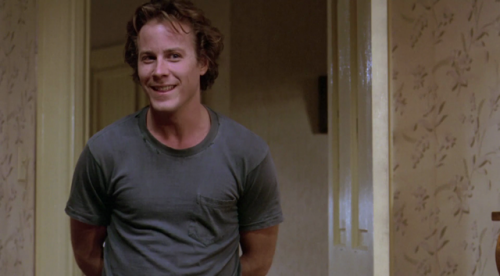He stands in the middle of his house after taking the morning flight down to Chicago with the rest of his family and spots something. He leans down to pick up a shiny gold tooth that gleams off the wooden floor. "Honey, what's this?"
There's a dozens of character actors who I geek out whenever they appear in a movie. They elevate the movie they are in. Today I want to focus on John Heard. A charming wit with a hardened edge. More specifically, I want to shine a light on 5 roles of his I single out as his best. 2 of which have him as lead. So many of my favorite character actors give me a what-if? vibe in terms of how they would do as the lead actor. Chilly Scenes of Winter and Cutter's Way show Heard as not only being more than capable of delivering the goods, but painfully under utilized in future roles.
5 ROLES
1. Alex Cutter in Cutter's Way (1981)
Cutter's Way came at the beginning of the 80's but it feels like a 70's picture. The cynicism about waking up to find the American Dream was a lie. The neo-noir that it's more well known brother Chinatown help kick off. John Heard's Alex Cutter is the last American hero. A boozehound living in the shadow of Vietnam who, along with his friend (played by the always great Jeff Bridges) come to terms that they self-actualized people they hate without even realizing it along the way. More than just Heard's best, a great film with an ending up there with Chinatown and Electra Glide In Blue.
2. Charles in Chilly Scenes of Winter (1979)

Romantic comedies are a genre I find myself liking the older they are. 30s and 40s specifically. Chilly Scenes approaches the genre with a firm hand in realism. John Heard's Charles is the hopeless romantic head over heels in love with Mary Beth Hurt's Laura. Even knowing she is married. "Why would you choose someone who loves you too little over someone who loves you too much?" Rarely have I seen a movie that approaches its subject with an adult understanding of relationships. Joan Macklin Silver's film is severely underseen. Look out for a fantastic cameo from Griffin Dunne.
3. Peter McAllister in Home Alone (1990)
Home Alone is a film that, if it was a part of your childhood, changes with you. You grow to realize that the performances of John Heard and Catherine O'Hara were the gold tooth in this crown of teeth. Catherine's impeccable comic timing was something I knew of from Beetlejuice. As with many people of my generation, Home Alone is where I first saw John Heard. There wasn't any notable mainstream movie he was in before this. So if I ever was to track his career, I was going to have to dig.
4. Detective Vin Makazian in The Sopranos (1999)

It takes talent to play someone as downtrodden as a character as Vin Makazian. Especially in gangster related projects. Actors love the meaty "tough guy" role. Makazian is Tony's informant in the FBI. A detective riddled with his own problems, Tony goes out of his way to dress him down and insult him at every turn. "Ya know, you got an amazing ability to sum up a man's life in a single sentence. A degenerate gambler with a badge. You're a pisser. You're a real pisser."
5. Bartender Tom Schorr in After Hours (1985)
Griffin Dunne's nocturnal odyssey through the streets of SoHo lead him to many an interesting character actor. Dick Miller, Patricia Arquette, Catherine O'Hara (she's back!), Teri Garr, Linda Fiorentino, Cheech and Chong. In one scene, Heard does what all of the best character actors do- he steals it.
